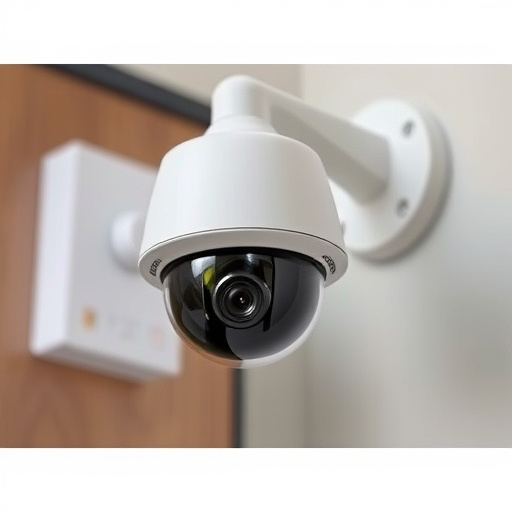This text introduces dummy surveillance cameras as an affordable security solution, emphasizing proper positioning for maximum deterrence. It suggests placing cameras in visible areas like entry points and common crime spots with clear lines of sight, maintaining optimal lighting and realistic angles. The guide encourages a dynamic approach by changing camera locations and angles regularly to prevent criminals from becoming accustomed, ultimately enhancing security through psychological deterrence.
“Enhance security without breaking the bank with our comprehensive Dummy Surveillance Deterrent Positioning Guide. Discover how these lifelike cameras can transform your home or business into a fortified zone. Learn about their crucial role in deterring potential intruders and understand the key factors for optimal placement. From best practices to common mistakes to avoid, this guide equips you to strategically position dummy cameras for maximum effectiveness.”
- Understanding Dummy Surveillance Cameras and Their Role in Deterrence
- Key Factors to Consider for Effective Placement
- Best Practices for Dummy Camera Positioning
- Common Mistakes to Avoid During Installation
Understanding Dummy Surveillance Cameras and Their Role in Deterrence
Dummy surveillance cameras, also known as decoy or mock security cameras, are an innovative deterrence solution designed to protect properties and individuals from potential threats. These realistic-looking devices serve as a powerful visual reminder of surveillance, often deterring would-be intruders before they even attempt to enter a premises. By strategically placing dummy cameras, property owners can create the illusion of enhanced security, significantly reducing the risk of crime.
When it comes to dummy surveillance deterrent positioning, knowledge is key. Understanding the principles of effective placement involves considering factors such as visibility, angle, and realistic replication. Positioning these cameras in plain sight, at crucial entry points, or near valuable assets, can act as a powerful psychological barrier. The guide aims to equip individuals with the necessary tools to create an intelligent network of dummy surveillance, thereby enhancing overall security measures without breaking the bank.
Key Factors to Consider for Effective Placement
When placing dummy surveillance cameras, understanding key factors is essential for an effective deterrent positioning guide. Firstly, consider the area’s visibility – strategically positioning cameras in plain sight can act as a powerful dissuasion. Secondly, crime patterns play a significant role; focus on areas with high incident rates to maximize their impact. Thirdly, accessibility matters; ensure the camera’s view isn’t blocked and it has an unobstructed line of sight to capture clear footage.
Additionally, environmental factors like lighting should be taken into account, as well as the camera’s angle and field of view to guarantee comprehensive coverage. Regular maintenance is also crucial; keep cameras clean and functional to maintain their deterrent effect. By strategically implementing these considerations, a dummy surveillance deterrent guide can significantly enhance security measures.
Best Practices for Dummy Camera Positioning
When placing dummy surveillance cameras, or decoys, consider a strategic deterrence approach that mimics real security measures. Position them in areas where they have a clear view, such as entry points, common crime spots, and visible spaces. Keep them at eye level to maintain realism; placement too high or low can appear suspicious.
A dummy camera positioning guide should also account for natural human behavior. Place the cameras near places people congregate, like reception areas or common waiting zones. Avoid obvious symmetry or patterns that might give away their fake nature. Regularly change their locations and angles to keep would-be thieves guessing, enhancing overall security.
Common Mistakes to Avoid During Installation
When setting up dummy surveillance cameras, there are several common mistakes to avoid that can undermine their effectiveness as a deterrent. One of the most frequent errors is placing them in obvious locations where criminals would expect to find them, rendering their purpose as a decoy void. Cameras should be strategically positioned in less visible areas, utilizing unexpected angles and heights to mimic genuine surveillance equipment. Additionally, ensuring consistent lighting and avoiding shadows is crucial; a poorly lit camera can easily be spotted and bypassed by potential intruders.
Another mistake to steer clear of is clustering multiple dummy cameras together. While it might seem like adding more would enhance security, this approach can make the entire setup appear artificial and less credible. Instead, space them out to create a realistic surveillance network. Moreover, regular maintenance and rotation of these decoys are essential; stale, dusty, or damaged cameras will quickly lose their deterrent value. Following a dummy surveillance deterrent positioning guide can help homeowners and businesses avoid these pitfalls, maximizing the psychological impact on potential criminals.
A well-placed dummy surveillance camera can serve as a powerful deterrent, providing a sense of security for any property. By understanding the key factors and best practices outlined in this Dummy Surveillance Deterrent Positioning Guide, you can maximize their effectiveness. Avoid common installation mistakes and leverage these tips to create a robust security system that discourages potential intruders.
